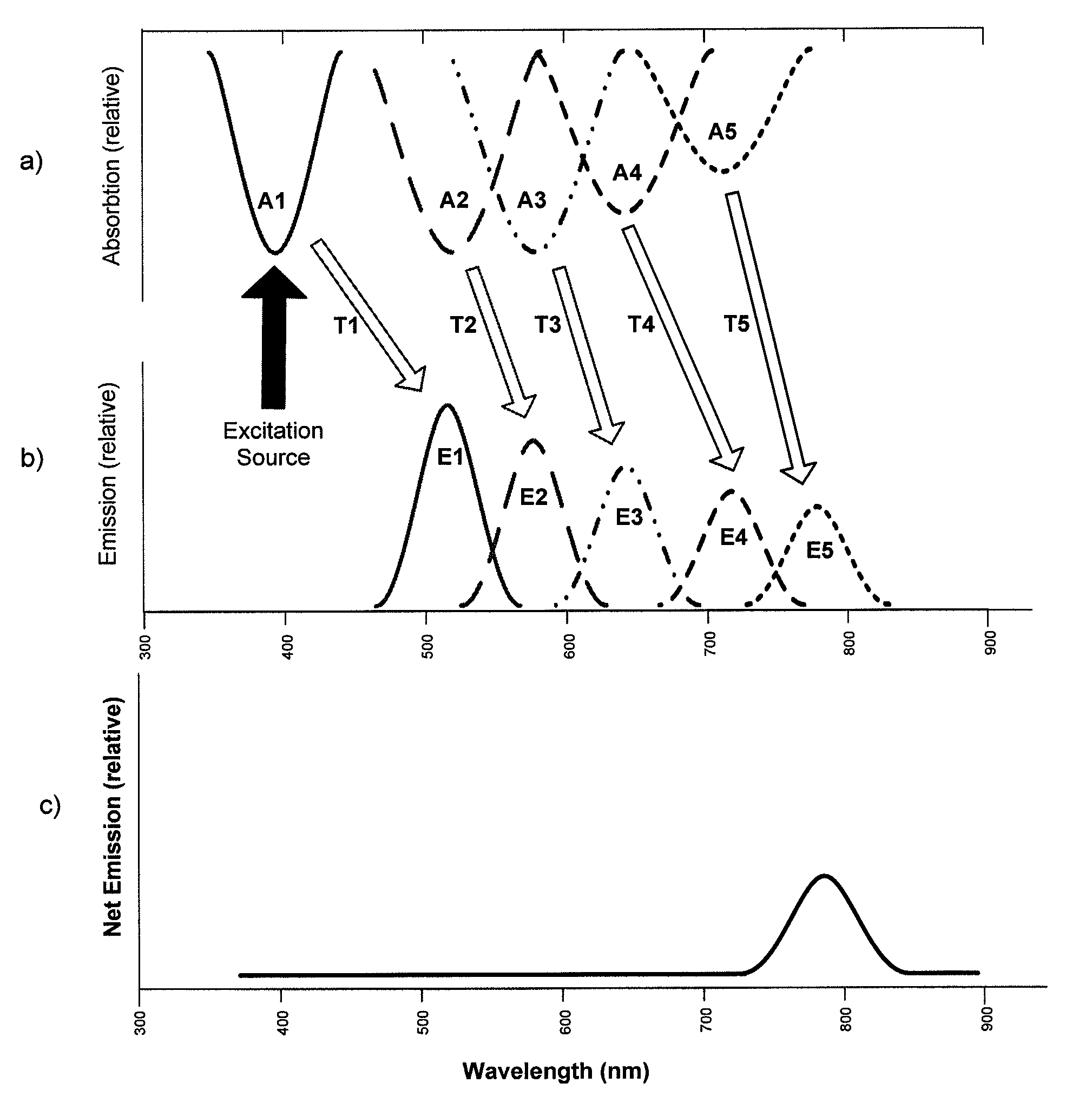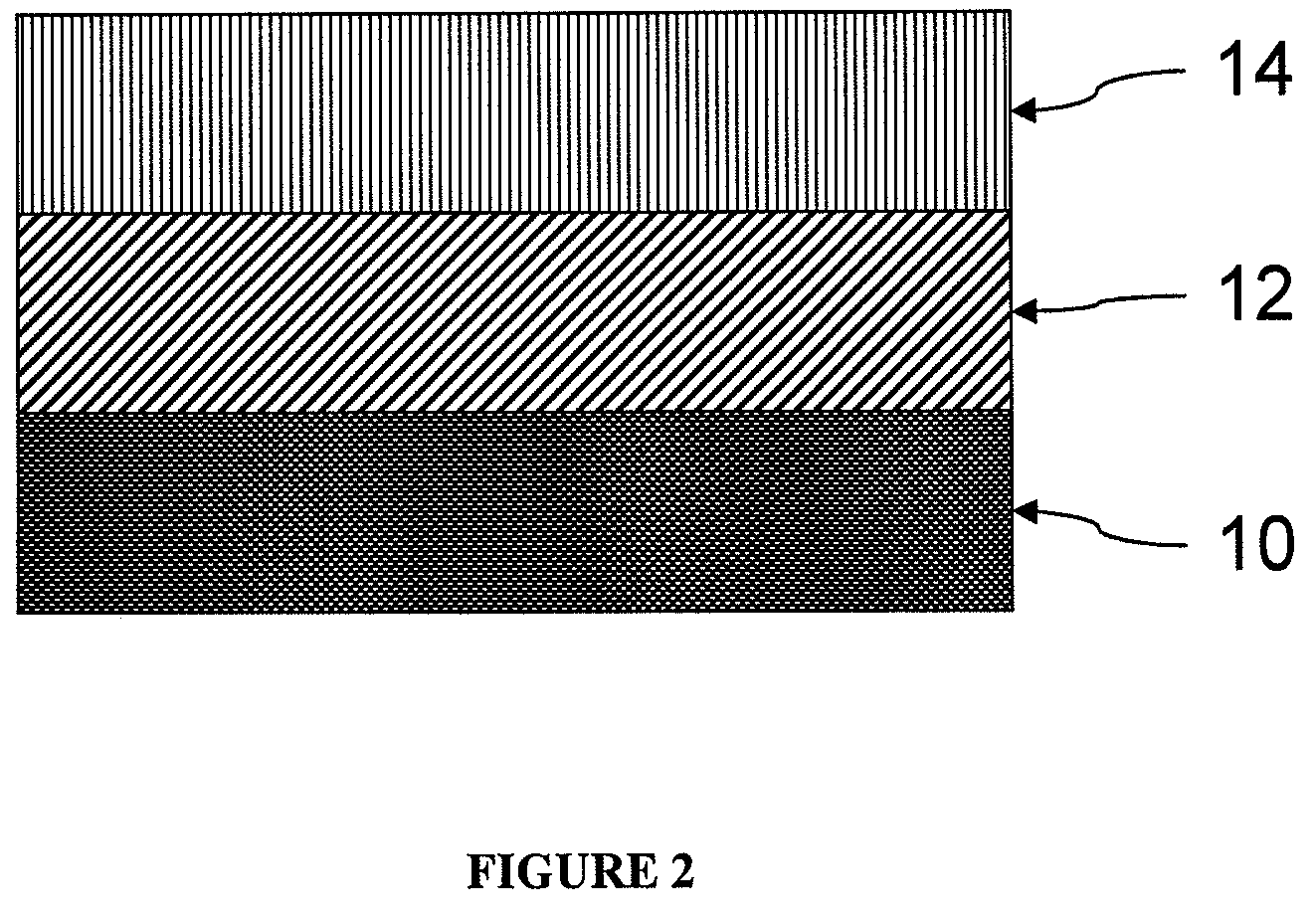Photoluminescent markings with functional overlayers
a technology of photoluminescent markings and overlayers, applied in the field of photoluminescent markings, can solve the problems of not enabling stealth detection, and not being able to disclose the use of overlayers, so as to increase the photolytic stability of such markings, enhance the use of stealth markings, and increase the range of daylight colors
- Summary
- Abstract
- Description
- Claims
- Application Information
AI Technical Summary
Benefits of technology
Problems solved by technology
Method used
Image
Examples
example 1
Stealth Marking
Infrared Emitting Photoluminescent Layer:
[0124]Into 54.47 g of ethylene glycol monobutyl ether was admixed 20.35 g of NeoCryl® B-818 (an acrylic resin from DSM NeoResins®). To the admix was added 1.80 g of DisperBYK® 180 (from BYK-Chemie), 0.88 g of TEGO® Wet 270 and 0.57 g of TEGO® Airex 900 (both from Degussa GmbH) with stirring. Then 0.10 g of rhodamine 19P, 0.10 g of dichlorofluorescein, 0.10 g of Nile Blue, 0.10 g of Nile Red, 0.05 g of sulfarhodamine B, 0.01 g of rhodamine 800 and 0.01 g of 3,3′-diethyloxatricarbocyanine iodide were added and mixed until dissolved. 20.35 g of H-13, green phosphor (from Capricorn Specialty Chemicals) was then added. 1.11 g of BYK® 410 (from BYK-Chemie), was then added. The photoluminescent composition thus prepared was coated onto a violet colored wall panel using a wire draw down bar, and dried at 50° C. (<5% solvent) for 12 hours to a dried thickness of 10 mils.
Functional Overlayer #1:
[0125]To 91.34 g of Hauthane L-3058 (from C...
example 2
Marking with Overlayer to Provide Photolytic Stability
Infrared Emitting Photoluminescent Composition
[0132]Into 54.47 g of ethylene glycol monobutyl ether was admixed 20.35 g of NeoCryl® B-818 (an acrylic resin from DSM NeoResins®). To the admix was added 1.80 g of DisperBYK® 180 (from BYK-Chemie), 0.88 g of TEGO® Wet 270 and 0.57 g of TEGO® Airex 900 (both from Degussa GmbH) with stirring. Then 0.10 g of rhodamine 19P, 0.10 g of dichlorofluorescein, 0.10 g of Nile Blue, 0.10 g of Nile Red, 0.05 g of sulfarhodamine B, 0.01 g of rhodamine 800 and 0.01 g of 3,3′-diethyloxatricarbocyanine iodide were added and mixed until dissolved. 20.35 g of H-13, green phosphor (from Capricorn Specialty Chemicals) was then added with mixing. 1.11 g of BYK® 410 (from BYK-Chemie) was then added with mixing.
Functional Overlayer Composition #3:
[0133]To 91.34 g of Hauthane L-3058 (from C. L. Hauthaway Corp.) were admixed 1.82 g of TEGO® Wet 270 and 1.82 g of Tinuvin® 1130 (from Ciba Specialty Chemicals). ...
PUM
 Login to View More
Login to View More Abstract
Description
Claims
Application Information
 Login to View More
Login to View More - R&D
- Intellectual Property
- Life Sciences
- Materials
- Tech Scout
- Unparalleled Data Quality
- Higher Quality Content
- 60% Fewer Hallucinations
Browse by: Latest US Patents, China's latest patents, Technical Efficacy Thesaurus, Application Domain, Technology Topic, Popular Technical Reports.
© 2025 PatSnap. All rights reserved.Legal|Privacy policy|Modern Slavery Act Transparency Statement|Sitemap|About US| Contact US: help@patsnap.com



